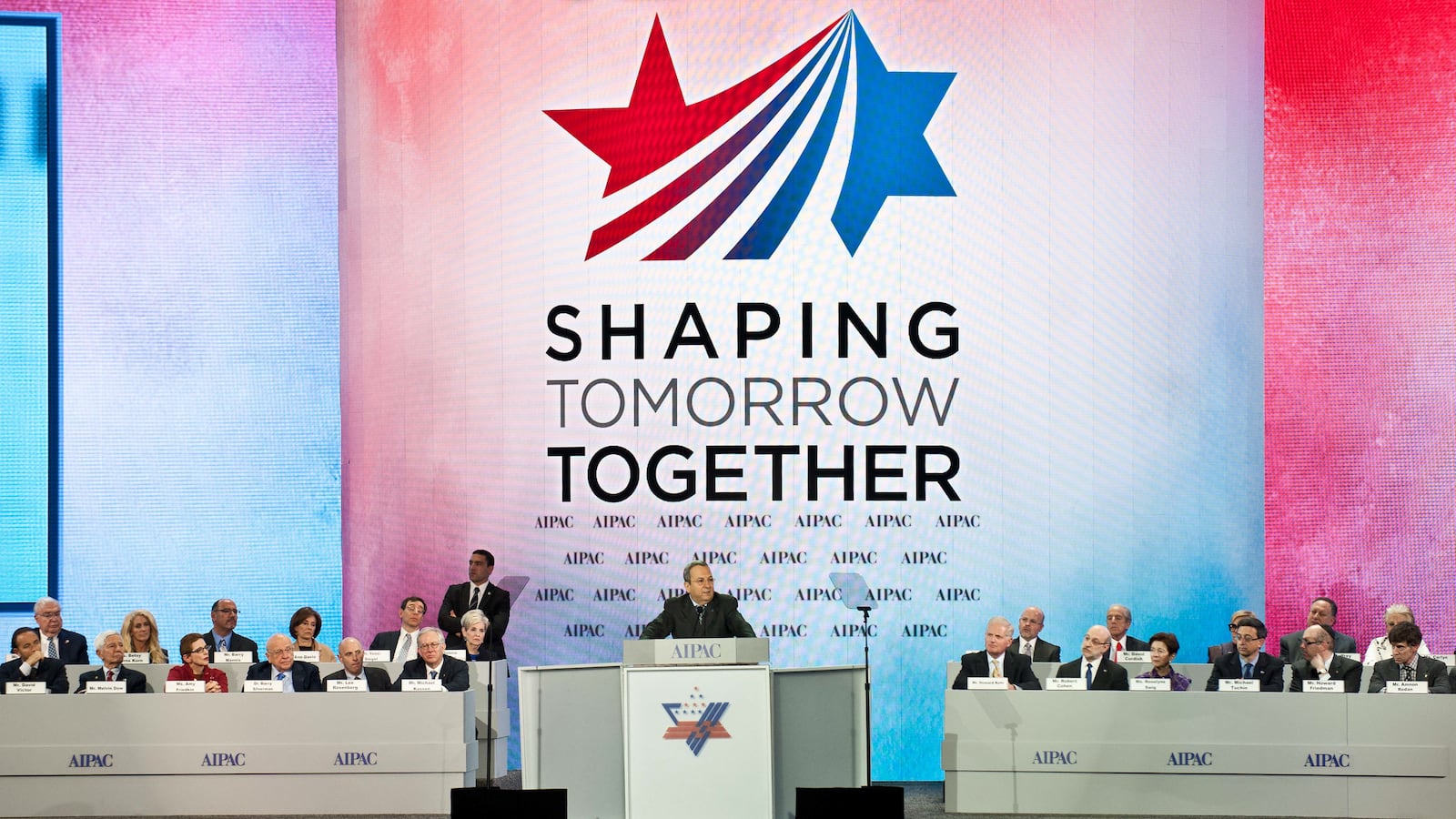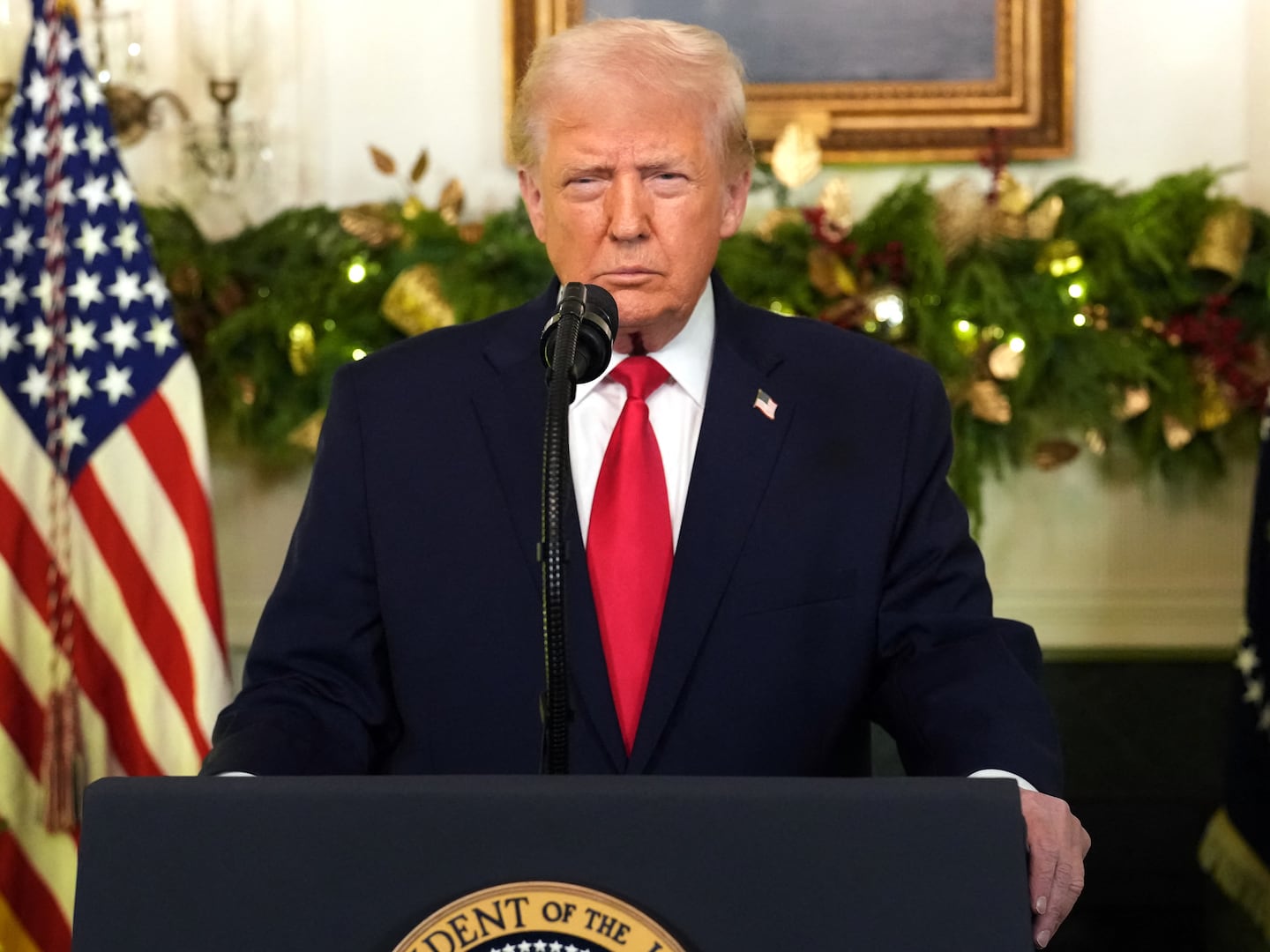When an organization such as AIPAC gathers in Washington, it's meant to serve two purposes: deepen members’ ties, and lobby for a particular position on the Hill. We’re allowed to call it lobbying (though, heaven forfend, we must not refer to AIPAC as the “Israel lobby”) because that’s what AIPAC calls it: when the conference winds up its Tuesday morning session, attendees will be bussed over to the Capitol, for lobbying appointments.

Curious as to what this lobbying will be about? Look no further than the two “Lobbying In A Minute” videos on the AIPAC policy conference website: “Strategic Partner” and “Stopping Iran.”
In the first video, we’re told that the world is “increasingly dangerous,” and that “the partnership between between the U.S. and Israel must continue to grow and strengthen.” We’re called on to urge our members of Congress to declare Israel “a major strategic partner” of the U.S., giving Israel the opportunity to avail itself of “unique privileges and collaborations.” In the second, we’re told that Iran “poses a strategic threat to the United States, and an immediate threat to Israel.” We hear about the arms that Iran has provided Hamas and Hezbollah, and that “nothing is more dangerous than Iran’s pursuit of a nuclear weapons capability.”
“A strong Jewish state,” Brad Gordon, AIPAC’s director of Policy and Government Affairs assures us, “is a vital American national interest.”
Notice anything missing?
Other than the passing mention of Hamas, the four million Palestinian people who are Israel’s actual neighbors, who all live under varying degrees of Israeli military control (and have been so for 45 years), whose very right to self-determination is being erased by Israel’s deepening attachment to the settlement project which is, in turn, driving Israeli politics and shaping Israeli culture—those four million people? Who now?
Of course, we could have seen this coming—in fact, we did see it coming. But there remains something sinus-clearing to the sheer through-the-looking-glass quality of this sketch of Israel as a place under existential threat, with access to the ear and purse strings of the U.S. Congress; a place where rockets are pointed at Israel’s throat, but the effects of Israel’s own military hardware are invisible; a place where the Transportation Ministry can institute segregated bus lines, and then its supporters can pass by a statue of Rose Parks to plead its cause.
A place where the impact of 45 years of daily, grinding, ugly occupation—on both occupied and occupier—is worth nary a word.
Whatever AIPAC supporters may say on the Hill, the fact remains that as dangerous as a nuclear Iran might be, the single greatest threat to “a strong Jewish state” is that state’s occupation of four million Palestinians. Those four million people will not disappear just because AIPAC chooses to ignore them in its lobbying appointments—and when AIPAC members head back home, the settlement project will continue to undermine the future of the very state they will believe themselves to have helped.






